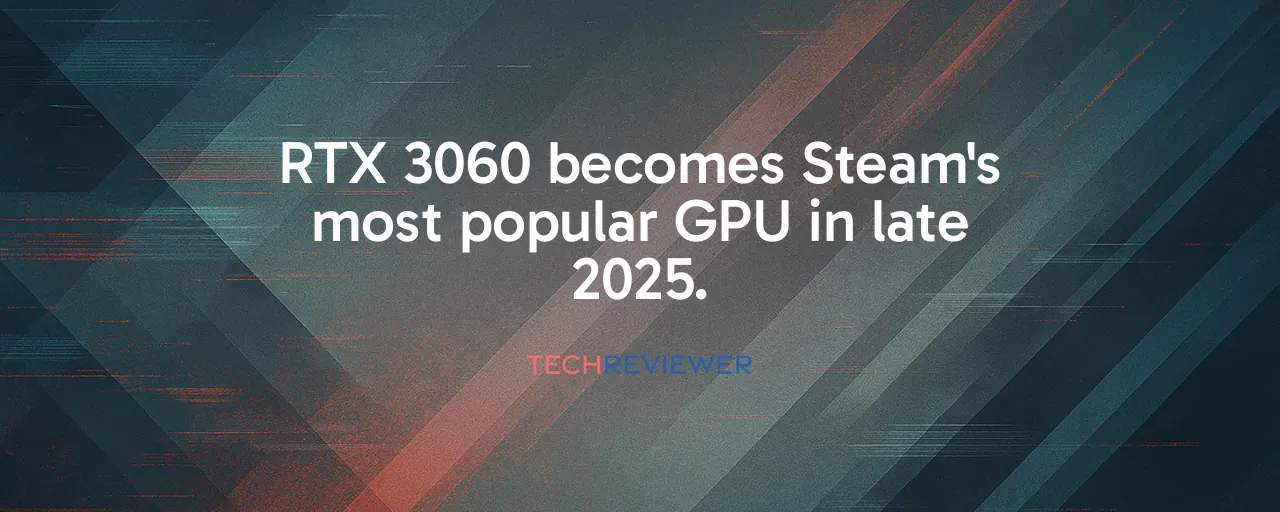Unexpected Leader Emerges
Valve released the Steam Hardware Survey for October 2025, and the results caught many off guard. The Nvidia GeForce RTX 3060, a card that launched back in February 2021, now sits at the top with 4.30% of users. That marks a small uptick from 4.25% the previous month. People clearly keep relying on this mid-range workhorse for their daily gaming sessions.
The shift pushed the RTX 4060 Laptop GPU down to second place at 4.10%, after it held the lead in September. Desktop versions of the RTX 4060 and RTX 3050 follow, along with the GTX 1650 rounding out the top five. These numbers highlight how gamers hold onto hardware far longer than expected.
Older Cards Defy Expectations
Take the GTX 1650, which arrived in April 2019. It still commands 2.92% of the survey, six years later. Even the GTX 1060 from 2016 hangs on with 1.88%, despite Nvidia ending official support in October 2025. Millions of players run these veterans without issue in current titles.
Nvidia controls the entire top thirty spots, leaving AMD's first entry at ninth with Radeon Graphics. Intel's Iris Xe appears further down at fifteenth with 1.9%. This dominance stems from driver stability and ecosystem advantages that keep users in the fold.
Software Keeps Hardware Relevant
The RTX 3060 packs 3584 CUDA cores, 12GB of GDDR6 VRAM, and 360 GB/s bandwidth. Those specs deliver solid 1080p performance at high settings in most 2025 games. Benchmarks show it hitting 60 frames per second or better in titles like Stalker 2 with adjusted presets and DLSS enabled.
DLSS 4, compatible down to RTX 20-series cards, provides 15-20% uplift on the RTX 3060 through transformer-based models. Nvidia's ongoing driver updates squeeze extra efficiency from the architecture. Game engines prioritize broad compatibility, so developers tune for these established configurations.
Case Studies in Longevity
Look at the GTX 1060. Released in 2016, it maintained dominance through 2020 and still holds 1.88% today, years after driver support ended. Community efforts and legacy branches keep it functional for 1080p play.
Contrast that with the RTX 2060 from 2018 at 2.04%. It benefits from DLSS support, showing how software bridges generational gaps. The RTX 3060 follows this path, with its ample VRAM handling texture demands that challenge newer 8GB cards in certain scenarios.
These examples reveal a key lesson. Performance gains between generations have slowed to 20-30%, down from 50-100% in earlier decades. Gamers see little reason to replace functional hardware when tweaks maintain smooth experiences.
Market Forces at Play
Used RTX 3060 units sell for around $186 on secondary markets, compared to $279 new. Prices for most cards sit below MSRP, yet RTX 50-series adoption trails, with the RTX 5070 at 1.79%. The 2021 mining boom left surplus stock, and supply chains now meet demand easily.
AMD's RDNA 4 cards earn praise but capture only 6% discrete share. Developer focus on Nvidia's CUDA and tools creates inertia. Casual players at 1080p find no urgency to upgrade, while enthusiasts chase higher resolutions or frame rates.
Balancing Act for Stakeholders
Game studios optimize for wide audiences, ensuring titles run on RTX 30-series and older. This approach sustains player bases but limits pushing boundaries. Nvidia enjoys steady revenue from dominance, though slower cycles may trim growth to 5-8% annually.
Extended use cuts e-waste and resource demands. Manufacturing a new GPU carries 2-3 times the environmental cost of running an existing one longer. Regulators in Europe and California favor such patterns through lifecycle policies.
Patterns Point Ahead
RTX 30-series cards likely remain prominent into 2026. Future titles may demand more from tensor cores or VRAM, nudging upgrades by 2027. For now, the RTX 3060 proves that capable hardware, paired with smart software, reshapes how long gamers stay satisfied.
